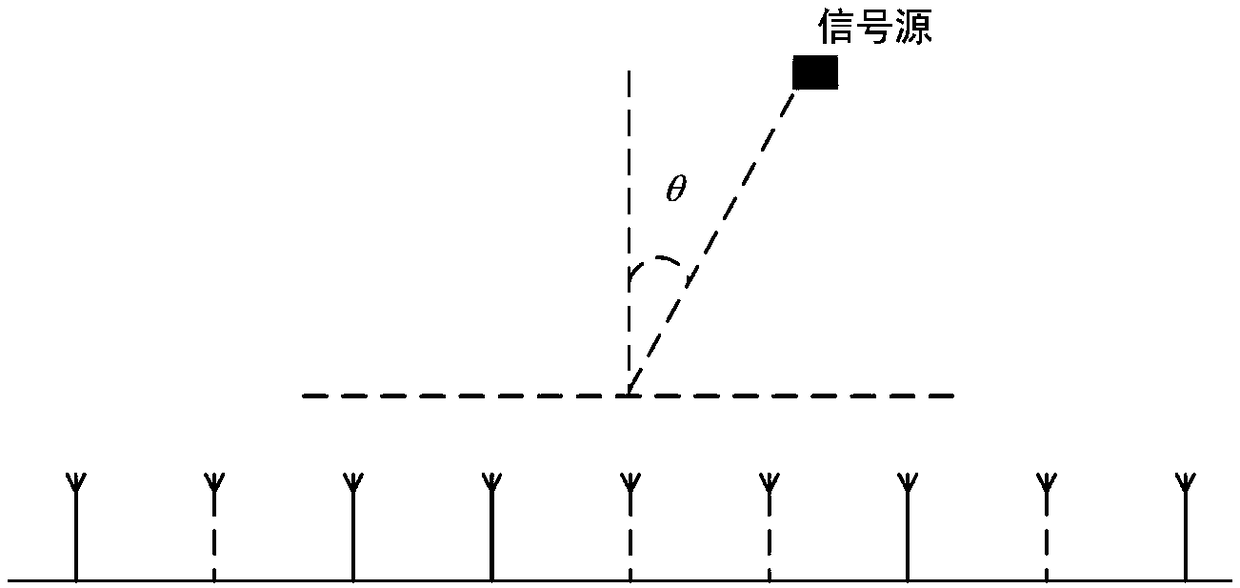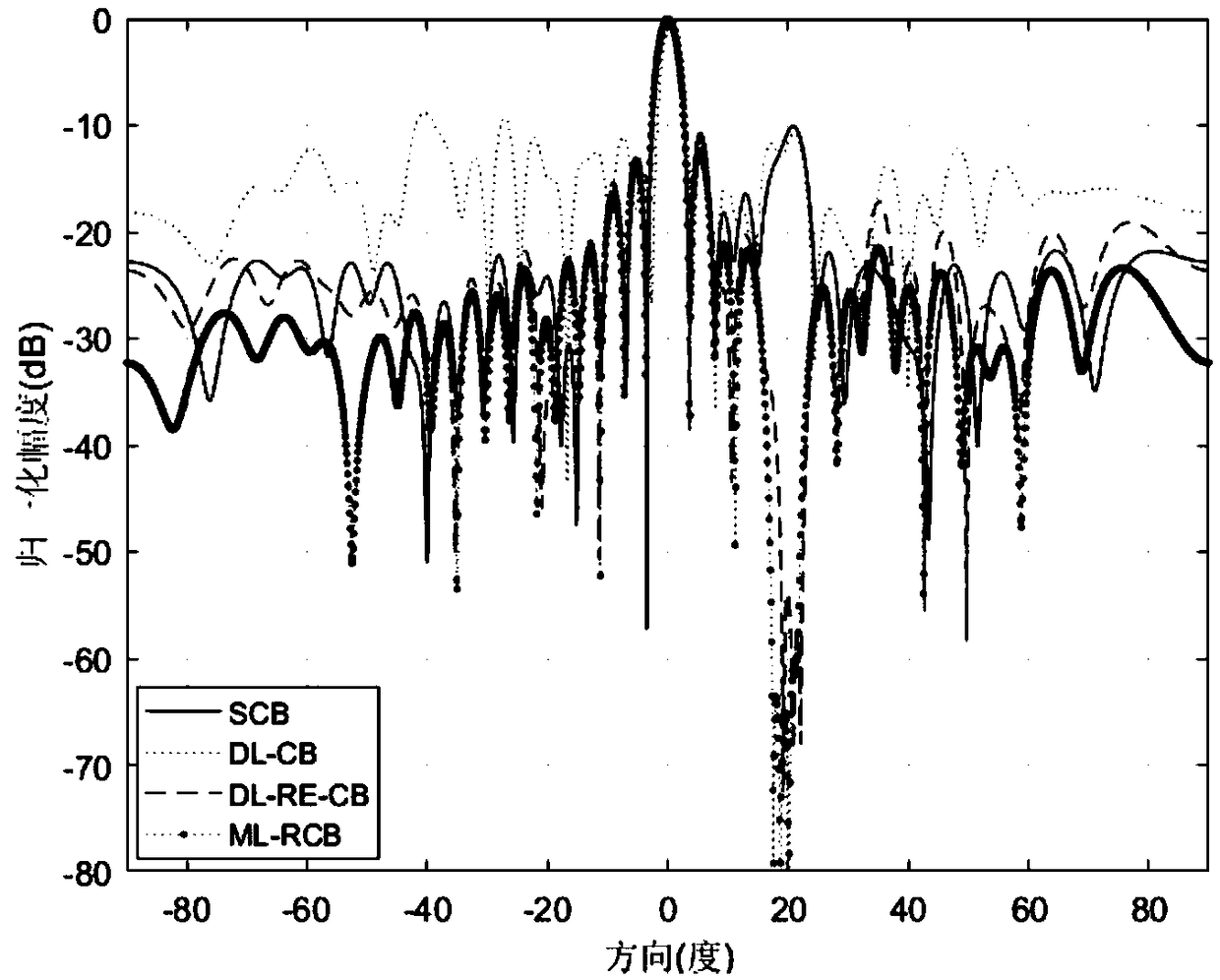Adaptive beam forming method based on maximum likelihood resampling
An adaptive beam and maximum likelihood technology, applied in the direction of space transmit diversity, radio transmission system, electrical components, etc., can solve the problem that the influence of interference suppression effect cannot be removed, and achieve the improvement of interference suppression effect, reduce the impact, The effect of suppressing the influence of interference signals
- Summary
- Abstract
- Description
- Claims
- Application Information
AI Technical Summary
Problems solved by technology
Method used
Image
Examples
specific Embodiment approach 1
[0017] In the adaptive beamforming method based on maximum likelihood resampling of this embodiment, the adaptive beamforming technology can form a narrow beam in the desired signal direction and form a null in the interference direction. It has been widely used in radar, sonar, and sonar. Wireless communication and other fields.
[0018] Ideally, assume that a uniform linear array with N elements is used to receive coherent signals and coherent interference, and the element spacing is d; at time t, there are K narrow-band coherent signals and P narrow-band coherent interferences, denoted as s 1 (t),s 2 (t),...,s K (t) and J 1 (t),J 2 (t),…,J P (t), their wavelengths are λ; the direction of the target signal is θ 1 ,θ 2 ,...,Θ K , The interference direction is The direction of interference is time-varying and can be expressed as
[0019]
[0020] Where Represents the center position of p(p=1, 2,...P) interference angles, Represents the maximum absolute value of the time-varying i...
specific Embodiment approach 2
[0044] The difference from the first embodiment is that the adaptive beamforming method based on maximum likelihood resampling in this embodiment uses the M snapshot sampling data of the received signal as samples, and calculates the covariance of the samples. The process of matrix is, in actual application, the interference plus noise covariance matrix R p+ξ It cannot be directly obtained, so the M snapshot sampling data of the received signal is used as the sample for calculation, and the covariance matrix of the received signal sample is obtained as:
[0045]
[0046] And use Instead of matrix R p+ξ Resolve to get the optimal weight vector:
[0047]
specific Embodiment approach 3
[0048] The difference from the first or second embodiment is that in the adaptive beamforming method based on maximum likelihood resampling in this embodiment, the process of using the particle filter to process the M covariance matrices in step 2 is ,
[0049] Under ideal circumstances, the standard Capon beamforming algorithm uses the interference plus noise covariance matrix R p+ξ , But used in practical applications is the received signal sample covariance matrix and It contains the desired signal information, so the Capon beamforming algorithm in actual use is more sensitive to the desired signal information and is more susceptible to the influence of the desired signal.
[0050] Consider the compressed array, as shown in the figure (the angle of the signal source is θ), we only keep N'active antennas (such as figure 1 Shown by the solid line), the labels are q 0 ,...,q N'-1 . The data received by this subarray at time t can be regarded as a compressed observation, using S...
PUM
 Login to View More
Login to View More Abstract
Description
Claims
Application Information
 Login to View More
Login to View More - R&D
- Intellectual Property
- Life Sciences
- Materials
- Tech Scout
- Unparalleled Data Quality
- Higher Quality Content
- 60% Fewer Hallucinations
Browse by: Latest US Patents, China's latest patents, Technical Efficacy Thesaurus, Application Domain, Technology Topic, Popular Technical Reports.
© 2025 PatSnap. All rights reserved.Legal|Privacy policy|Modern Slavery Act Transparency Statement|Sitemap|About US| Contact US: help@patsnap.com



